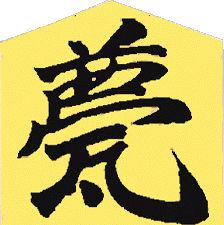|
Roasting technology brings out the deliciousness and pleasing aroma by
applying heat to raw coffee beans. It is said that 70% of the taste of
coffee depends on the quality of beans, 20% depends on roasting technology,
and the remaining 10% depends on extraction technology.
Therefore, it is the most important factor to select good beans for drawing
out the deliciousness of coffee. The roaster cannot change the composition
of the beans, and they use the beans they bought. However, roasting technology
is important because it accounts for 20% of the factors related to taste.
It would be best if you kept to this principle.
The following considerations are crucial to bring out the best taste and
aroma of the beans at the time of roasting:
| 1 |
The temperature of the heat to be applied. |
| 2. |
Time duration to apply the heat. |
| 3. |
When the heating temperature must be changed, timing of the change and
next temperature setting |
| 4. |
Timing to finish roasting. This is the most important. |
If these variables change, the taste and flavor will change significantly.'
When roasting coffee beans, it is first necessary to thoroughly remove
the water contained in the beans. Therefore, at the beginning of roasting,
take time to dry the beans at a low temperature. When the water runs out,
the beans start to be harden, so from here a full-fledged "roasting"
will start so it is necessary to strengthen the heat (“Coffee Science”
by Associated Prof. of Shiga Univ. Yukihiro Tanbe)."
I'll be a little more specialized, but heat is used to dry the beans and
melt the ingredients at the beginning of the roasting process. This stage
is called an endothermic reaction. Up to this point, it is necessary to
take time to dry the beans thoroughly. After the drying is complete, the
color of the beans starts to change little by little. Around this time,
an exothermic reaction occurs in which components of the raw bean are oxidized
and decomposed.'
"In the exothermic reaction, the color of beans changes to brown due
to caramelization and Maillard reaction. The radical reaction plays a vital
role in browning, and H₂O₂ is
generated in the process, and the brown pigment derived from chlorogenic acid
is automatically oxidized. H₂O₂ production and caramelization by the above and H₂O₂
production by the Maillard reaction proceed overlappingly
Near the end of roasting, the necessary decomposition should have already been completed, so there is no need to raise the temperature further. Instead, I think it is better to heat slowly to determine the end point. "
(Coffee Roasting Chemistry and Technology (Professor Toshiro Nakabayashi
of Shizuoka University
My idea is to make use this professional skill at home, and to connect
with others persons through roasting.'
"About 600 kinds of ingredients are mixed in raw coffee beans" (“The coffee science I'd like to know more” by Prof. Yukio Hirose of Kanazawa University), In addition to the above fact, as stated by Prof. Hirose, the composition ratio also depends on the coffee production area, farm, or harvested year. In other words, the names of the ingredients contained and their composition ratios in the raw beans in your hand are entirely unknown.
The complexity of roasting is followed by how the taste is a result of
various chain reactions as described below:
"The components in the beans undergo various chain reactions when
heated. If the heating temperature changes or the heating duration time
differs, the reaction products will differ, and the subsequent chain reactions
will also differ. Depending on what kind of chain reaction will be followed,
the taste and flavor of roasted beans are different."(“Coffee Science”
by Associated Prof. of Shiga Univ. Yukihiro Tanbe)
As mentioned above, it's hard just to reproduce the taste and flavor, it can be said that it is impossible to bring out the ideal preference and flavor by a random heating method. Therefore, our ancestors accumulated the roasting history, repeated tastings, and devised a roasting profile (a record of heating temperature changes) in search of a better taste while comparing with the taste of beans roasted in the past. Even today, when science developed, this process remains the same.
On the other hand, it is not easy for an individual to record a roasting
profile at home. You have to focus your attention and adjust the temperature
and heating time while observing the ever-changing color and luster of
the beans' surface, the color and amount of rising smoke, and the change
in odor, and decide when to stop roasting. If you are fascinated by writing
down the temperature and time, you tend to overlook the changes in the
beans, and on the contrary, trying to determine the condition of the beans
slows down the recording hand.
My idea is to make anyone can do this easily and at the same time try to
breathe new life into the roasting of coffee.
|






